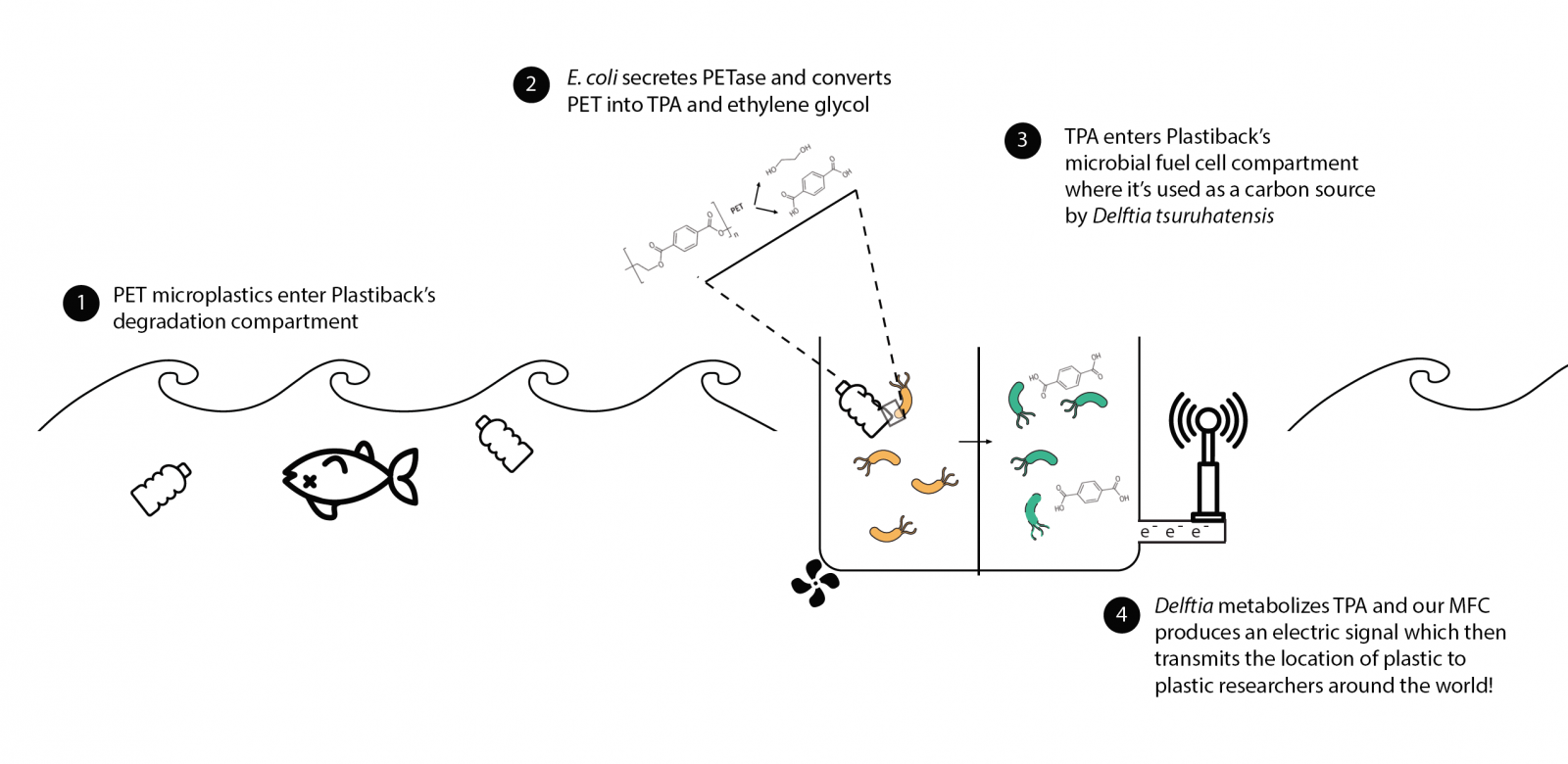|
|
| (11 intermediate revisions by the same user not shown) |
| Line 127: |
Line 127: |
| | | | |
| | <article id="main" class="container special"> | | <article id="main" class="container special"> |
| | + | |
| | | | |
| | | | |
| Line 135: |
Line 136: |
| | <header> | | <header> |
| | <h2>Plastiback</h2> | | <h2>Plastiback</h2> |
| − | <h3>A bacteria-based feedback plastic sensing device.</h3> | + | <h3>A synthetic biology based plastic sensing feedback device.</h3> |
| | <h4>Degrade plastic more simply, efficiently, sustainably. Anywhere.</h4> | | <h4>Degrade plastic more simply, efficiently, sustainably. Anywhere.</h4> |
| | <h4>Generate electricity from degradation to map out plastic in the ocean.</h4> | | <h4>Generate electricity from degradation to map out plastic in the ocean.</h4> |
| | </header> | | </header> |
| | | | |
| − | <section> | + | <section><p><center> |
| − | <p>Plastiback is a plastic-sensing system that gives feedback on where PET, a type of plastic, is located in the ocean. PET is a durable plastic, with multiple uses, including making the bottles for many of the drinks we enjoy.</p> | + | Plastiback is a plastic-sensing system that gives feedback on where PET, a type of plastic, is located in the ocean. |
| − | <p>While PET pollutes both the land and sea, the majority of PET litter ends up in the ocean. When plastic enters the ocean, it becomes difficult to clean up and even more difficult to study. For researchers who are investigating the scope and map of where PET is, Plastiback presents a novel and sustainable way to track ocean PET, while also using non-toxic methods to degrade PET!</p>
| + | <br>PET is a durable plastic, with multiple uses, including making the bottles for many of the drinks we enjoy. While PET pollutes both the land and sea, the majority of PET litter ends up in the ocean. When plastic enters the ocean, it becomes difficult to clean up and even more difficult to track. For researchers who are investigating the scope and map of where PET is, Plastiback presents a novel and sustainable way to locate ocean PET, while also using non-toxic methods to degrade PET!</center> |
| − | </section> | + | </p></section> |
| − | | + | |
| − | | + | |
| − | | + | |
| | | | |
| | + | <a href="#" class="image featured"><img src="https://static.igem.org/mediawiki/2016/thumb/d/d6/T--Harvard_BioDesign--home_davidrebekahfinal.png/1600px-T--Harvard_BioDesign--home_davidrebekahfinal.png"/></a> |
| | | | |
| | | | |













